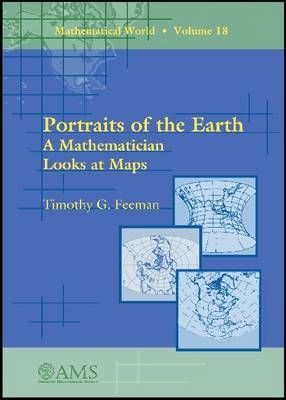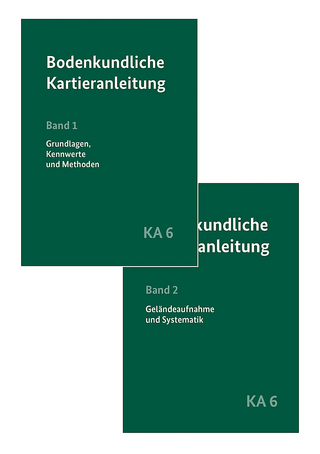
Portraits of the Earth
A Mathematician Looks at Maps
2002
American Mathematical Society (Verlag)
978-0-8218-3255-4 (ISBN)
American Mathematical Society (Verlag)
978-0-8218-3255-4 (ISBN)
Explores the mathematical ideas involved in creating and analyzing maps. This book presents the famous problem of mapping the earth. Through the visual context of maps and mapmaking, it shows students how contemporary mathematics can help them to understand and explain the world.
'Every map is a tool, a product of human effort and creativity, that represents some aspects of our world or universe...[This] course was powered by the belief that by exploring the mathematical ideas involved in creating and analyzing maps, students would see how mathematics could help them to understand and explain their world' - from the Preface. ""Portraits of the Earth"" exemplifies the AMS' mission to bring the power and vitality of mathematical thought to the nonexpert. It is designed to teach students to think logically and to analyze the technical information that they so readily encounter every day. Maps are exciting, visual tools that we encounter on a daily basis: from street maps to maps of the world accompanying news stories to geologic maps depicting the underground structure of the earth.This book explores the mathematical ideas involved in creating and analyzing maps, a topic that is rarely discussed in undergraduate courses. It is the first modern book to present the famous problem of mapping the earth in a style that is highly readable and mathematically accessible to most students. Feeman's writing is inviting to the novice, yet also interesting to readers with more mathematical experience. Through the visual context of maps and mapmaking, students will see how contemporary mathematics can help them to understand and explain the world. Topics explored are the shape and size of the earth, basic spherical geometry, and why one can't make a perfect flat map of the planet.The author discusses different attributes that maps can have and determines mathematically how to design maps that have the desired features. The distortions that arise in making world maps are quantitatively analyzed. There is an in-depth discussion on the design of numerous map projections - both historical and contemporary - as well as conformal and equal-area maps. Feeman looks at how basic map designs can be modified to produce maps with any center, and he indicates how to generalize methods to produce maps of arbitrary surfaces of revolution. Also included are end-of-chapter exercises and laboratory projects.Particularly interesting is a chapter that explains how to use MapleR add-on software to make maps from geographic data points. This book would make an excellent text for a basic undergraduate mathematics or geography course and would be especially appealing to the teacher who is interested in exciting visual applications in the classroom. It would also serve nicely as supplementary reading for a course in calculus, linear algebra, or differential geometry. Prerequisites include a solid grasp of trigonometry and basic calculus.
'Every map is a tool, a product of human effort and creativity, that represents some aspects of our world or universe...[This] course was powered by the belief that by exploring the mathematical ideas involved in creating and analyzing maps, students would see how mathematics could help them to understand and explain their world' - from the Preface. ""Portraits of the Earth"" exemplifies the AMS' mission to bring the power and vitality of mathematical thought to the nonexpert. It is designed to teach students to think logically and to analyze the technical information that they so readily encounter every day. Maps are exciting, visual tools that we encounter on a daily basis: from street maps to maps of the world accompanying news stories to geologic maps depicting the underground structure of the earth.This book explores the mathematical ideas involved in creating and analyzing maps, a topic that is rarely discussed in undergraduate courses. It is the first modern book to present the famous problem of mapping the earth in a style that is highly readable and mathematically accessible to most students. Feeman's writing is inviting to the novice, yet also interesting to readers with more mathematical experience. Through the visual context of maps and mapmaking, students will see how contemporary mathematics can help them to understand and explain the world. Topics explored are the shape and size of the earth, basic spherical geometry, and why one can't make a perfect flat map of the planet.The author discusses different attributes that maps can have and determines mathematically how to design maps that have the desired features. The distortions that arise in making world maps are quantitatively analyzed. There is an in-depth discussion on the design of numerous map projections - both historical and contemporary - as well as conformal and equal-area maps. Feeman looks at how basic map designs can be modified to produce maps with any center, and he indicates how to generalize methods to produce maps of arbitrary surfaces of revolution. Also included are end-of-chapter exercises and laboratory projects.Particularly interesting is a chapter that explains how to use MapleR add-on software to make maps from geographic data points. This book would make an excellent text for a basic undergraduate mathematics or geography course and would be especially appealing to the teacher who is interested in exciting visual applications in the classroom. It would also serve nicely as supplementary reading for a course in calculus, linear algebra, or differential geometry. Prerequisites include a solid grasp of trigonometry and basic calculus.
Geodesy--measuring the earth Map projections Scale factors Distances and shortest paths on the sphere Angles, triangles, and area on a sphere Curvature of surfaces Classical projections Equal-area maps Conformal maps Analysis of map distortion Oblique perspectives Other worlds: Maps of surfaces of revolution Appendix A: Aspects of thematic cartography: Symbolization, data classification, and thematic maps Appendix B: Laboratory projects Appendix C: Portraits of the earth: How the maps in this book were produced Bibliography Index.
| Erscheint lt. Verlag | 1.11.2002 |
|---|---|
| Reihe/Serie | Mathematical World |
| Zusatzinfo | maps, bibliography, index |
| Verlagsort | Providence |
| Sprache | englisch |
| Gewicht | 278 g |
| Themenwelt | Mathematik / Informatik ► Mathematik |
| Naturwissenschaften ► Geowissenschaften ► Geografie / Kartografie | |
| Naturwissenschaften ► Geowissenschaften ► Geologie | |
| Naturwissenschaften ► Geowissenschaften ► Geophysik | |
| ISBN-10 | 0-8218-3255-7 / 0821832557 |
| ISBN-13 | 978-0-8218-3255-4 / 9780821832554 |
| Zustand | Neuware |
| Haben Sie eine Frage zum Produkt? |
Mehr entdecken
aus dem Bereich
aus dem Bereich
über eine faszinierende Welt zwischen Wasser und Land und warum sie …
Buch | Hardcover (2023)
dtv (Verlag)
24,00 €
Buch | Hardcover (2024)
Schweizerbart'sche, E. (Verlag)
24,00 €


